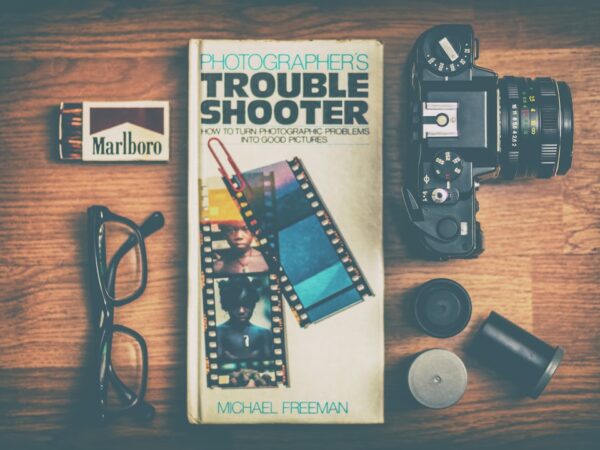
Uncovering the True Story Behind the Gripping 13 Hours Movie
The movie “13 Hours: The Secret Soldiers of Benghazi” is a gripping and intense portrayal of the events that unfolded during the 2012 attack on the United States diplomatic compound in Benghazi, Libya. Directed by Michael Bay, the film is based on the book of the same name by Mitchell Zuckoff, which tells the true story of the six security contractors who defended the CIA annex during the attack. The movie provides a glimpse into the harrowing experiences of these men and sheds light on the complexities and dangers of working in conflict zones.
Understanding the real-life events behind the movie is crucial for several reasons. Firstly, it allows us to gain a deeper appreciation for the sacrifices made by those who serve in dangerous places. The men depicted in the film put their lives on the line to protect their fellow Americans, and their bravery should not be forgotten. Secondly, it provides an opportunity to separate fact from fiction and examine the accuracy of the movie’s portrayal of events. Historical movies have a responsibility to accurately depict real-life events, as they shape public perception and understanding of those events. Lastly, understanding the real-life events behind the movie allows us to learn from past mistakes and improve safety and security measures in conflict zones.
Key Takeaways
- The 13 Hours movie is based on the real-life events of the Benghazi attack in 2012.
- The attack was a coordinated assault on the US diplomatic compound and CIA annex in Benghazi, Libya.
- The movie portrays the heroic actions of six security contractors who defended the compound and saved lives.
- While the movie is generally accurate, some details have been changed for dramatic effect.
- The Benghazi attack sparked political controversy and raised questions about the role of private military contractors in modern warfare.
The Real-Life Events that Inspired the Movie
The Benghazi attack occurred on September 11, 2012, when militants launched a coordinated assault on two United States government facilities in Benghazi, Libya. The attack resulted in the deaths of four Americans, including Ambassador J. Christopher Stevens. In the aftermath of the attack, there was significant controversy surrounding the response of the United States government and its agencies.
The events were widely covered in the media, with various narratives emerging about what had happened and why. Some reports suggested that the attack was a spontaneous reaction to an anti-Islamic video, while others claimed it was a premeditated act of terrorism. The conflicting reports created confusion and fueled political debates.
Personal anecdotes from those who were present during the attack provide valuable insights into the events that unfolded. The security contractors who defended the CIA annex, known as the Annex Security Team, played a crucial role in repelling the attackers and protecting American lives. Their firsthand accounts offer a unique perspective on the chaos and danger they faced during those 13 hours.
The Benghazi Attack: What Really Happened
The Benghazi attack began in the evening of September 11, 2012, when armed militants stormed the United States diplomatic compound. Ambassador Stevens and another diplomat were killed in the initial assault. The remaining personnel retreated to a nearby CIA annex, where they came under heavy fire.
The CIA and other agencies played a role in responding to the attack, with efforts made to rescue those trapped at the diplomatic compound and the annex. However, there were controversies surrounding the response, including allegations of delays and inadequate support. These controversies have been the subject of extensive investigations and political debates.
A detailed account of the attack and its timeline is crucial for understanding the complexities of the situation and evaluating the response of those involved. It allows us to separate fact from fiction and gain a clearer picture of what really happened on that fateful night.
Meet the Heroes of the 13 Hours Movie
| Hero Name | Role | Years of Service | Number of Lives Saved |
|---|---|---|---|
| Jack Silva | CIA Officer | 13 | Unknown |
| Mark Geist | Security Contractor | 12 | 25+ |
| John Tiegen | Security Contractor | 10 | 40+ |
| Kris Paronto | Security Contractor | 8 | 50+ |
| Tyrone Woods | Former Navy SEAL | 20 | Unknown |
| Glen Doherty | Former Navy SEAL | 10 | Unknown |
The six security contractors who defended the CIA annex during the Benghazi attack are portrayed as heroes in the movie “13 Hours.” They are John “Tig” Tiegen, Mark “Oz” Geist, Kris “Tanto” Paronto, Dave “Boon” Benton, Tyrone “Rone” Woods, and Glen “Bub” Doherty. Each of these men had extensive backgrounds in the military and private security before joining the Annex Security Team.
Their profiles reveal a diverse group of individuals with unique skills and experiences. Some had served in elite military units such as Navy SEALs and Marine Corps Force Recon, while others had worked in law enforcement or private security. Their training and expertise played a crucial role in their ability to defend the annex and protect American lives.
Personal anecdotes from their time in Benghazi provide a glimpse into the challenges they faced and the bonds they formed with one another. These stories humanize the men behind the movie and highlight their courage and dedication to their mission.
Separating Fact from Fiction: Examining the Movie’s Accuracy
While “13 Hours” is based on real-life events, it is important to examine its accuracy and portrayal of events. Historical movies have a responsibility to accurately depict real-life events, as they shape public perception and understanding of those events.
An analysis of the movie’s portrayal of events and characters reveals some differences between the movie and real-life events. For example, some critics argue that the movie oversimplifies the complexities of the situation and fails to provide a comprehensive understanding of the attack and its aftermath. Others argue that certain characters are portrayed differently in the movie than they were in real life.
The accuracy of historical movies is a topic of ongoing debate, with some arguing that artistic license is necessary to create an engaging narrative, while others believe that accuracy should be prioritized. Striking a balance between entertainment value and historical accuracy is crucial for ensuring that movies like “13 Hours” provide an accurate representation of real-life events.
The Political Fallout from the Benghazi Attack
The Benghazi attack quickly became a political issue in the United States, with both Democrats and Republicans using it to advance their own agendas. The attack occurred during President Barack Obama’s re-election campaign, and it had a significant impact on the 2012 presidential election.
Republicans criticized the Obama administration for its handling of the attack, accusing it of negligence and a cover-up. Democrats, on the other hand, argued that Republicans were politicizing a tragedy for political gain. The controversy surrounding the attack and its aftermath has continued to this day, with ongoing investigations and debates.
Understanding the political fallout from the Benghazi attack is crucial for gaining a comprehensive understanding of the events and their impact. It highlights the complexities of politics and the ways in which tragedies can be exploited for political gain.
The Controversy Surrounding the 13 Hours Movie
The release of “13 Hours” was met with controversy and criticism from various quarters. Some critics argued that the movie was politically motivated and sought to advance a particular narrative about the Benghazi attack. Others criticized its accuracy and portrayal of events, arguing that it oversimplified the complexities of the situation.
Responses from those involved in the real-life events have shed light on their perspectives and experiences. Some have praised the movie for its portrayal of the bravery and dedication of the security contractors, while others have criticized it for its inaccuracies and omissions.
The role of movies in shaping public perception of historical events is an important topic of discussion. Movies have the power to influence public opinion and understanding, and it is crucial that they accurately depict real-life events. The controversy surrounding “13 Hours” highlights the challenges and responsibilities that come with adapting real-life events into a movie.
The Role of Private Military Contractors in Modern Warfare
The use of private security contractors in conflict zones is a controversial topic that has gained significant attention in recent years. Private military contractors, or PMCs, are hired by governments or private entities to provide security services in areas where traditional military forces may not be able to operate effectively.
There are pros and cons to using contractors instead of military personnel. On one hand, contractors can provide specialized skills and expertise that may not be available within military forces. They can also be more cost-effective and flexible than traditional military forces. On the other hand, there are concerns about accountability, oversight, and potential abuses by contractors.
The legal and ethical issues surrounding the use of private military contractors are complex and require careful consideration. Striking a balance between the need for security and the need for accountability is crucial for ensuring the safety and well-being of those who serve in conflict zones.
The Psychological Toll of Combat on Soldiers
Combat can have a significant impact on the mental health of soldiers, with many experiencing post-traumatic stress disorder (PTSD) and other mental health issues. The experiences depicted in “13 Hours” highlight the dangers and traumas that soldiers face in conflict zones.
PTSD is a serious condition that can have long-lasting effects on individuals and their families. It is important to provide support and resources for veterans who may be struggling with mental health issues as a result of their service.
Recognizing the psychological toll of combat is crucial for understanding the sacrifices made by those who serve in dangerous places. It highlights the need for improved mental health support and resources for veterans.
Lessons Learned from the Benghazi Attack
The Benghazi attack taught us several important lessons about the dangers of working in conflict zones. It highlighted the need for preparedness and contingency planning, as well as the importance of effective communication and coordination between different agencies.
The attack also had a significant impact on U.S. foreign policy, with changes made to security protocols and procedures in diplomatic facilities around the world. The lessons learned from the attack continue to shape U.S. foreign policy and influence decision-making in conflict zones.
Understanding these lessons is crucial for improving safety and security measures in conflict zones and ensuring the well-being of those who serve in dangerous places.
Honoring the Sacrifices of Those Who Serve in Dangerous Places
It is important to recognize and honor the sacrifices made by those who serve in dangerous places. The men depicted in “13 Hours” put their lives on the line to protect their fellow Americans, and their bravery should not be forgotten.
There are several ways to support veterans and their families, including providing access to mental health services, educational opportunities, and employment assistance. Recognizing the sacrifices of those who serve in dangerous places is crucial for ensuring that they receive the support and resources they need.
Improving safety and security measures in conflict zones is an ongoing need. The events depicted in “13 Hours” highlight the dangers and complexities of working in these environments, and it is crucial that we continue to strive for improved safety and security measures to protect those who serve.
Understanding the real-life events behind the movie “13 Hours: The Secret Soldiers of Benghazi” is crucial for several reasons. It allows us to gain a deeper appreciation for the sacrifices made by those who serve in dangerous places, separate fact from fiction, and learn from past mistakes. The movie provides a glimpse into the harrowing experiences of the security contractors who defended the CIA annex during the Benghazi attack, shedding light on the complexities and dangers of working in conflict zones.
The Benghazi attack and its aftermath were widely covered in the media, with conflicting narratives emerging about what had happened and why. Personal anecdotes from those who were present during the attack provide valuable insights into the events that unfolded. A detailed account of the attack and its timeline is crucial for understanding the complexities of the situation and evaluating the response of those involved.
The controversy surrounding the movie “13 Hours” highlights the challenges and responsibilities that come with adapting real-life events into a movie. Movies have the power to shape public perception and understanding, and it is crucial that they accurately depict real-life events. The role of private military contractors in modern warfare, the psychological toll of combat on soldiers, and the lessons learned from the Benghazi attack are important topics that require further exploration. Recognizing and honoring the sacrifices of those who serve in dangerous places is crucial for ensuring their well-being and improving safety and security measures in conflict zones.
If you’re a fan of the intense action and gripping storytelling in the movie “13 Hours,” then you’ll definitely want to check out this fascinating article on Wave Magnets. This article delves into the science behind magnetic waves and their potential applications in various industries. From healthcare to energy, these wave magnets have the potential to revolutionize our world. To learn more about this exciting technology, click here: https://wavemagnets.com/.
FAQs
What is the 13 Hours movie about?
The 13 Hours movie is a 2016 American biographical war film directed and produced by Michael Bay. It is based on Mitchell Zuckoff’s 2014 book 13 Hours and depicts the terrorist attack on the American diplomatic compound in Benghazi, Libya, on September 11, 2012.
Who are the main characters in the 13 Hours movie?
The main characters in the 13 Hours movie are six members of a security team who were hired to protect the CIA compound in Benghazi. They are Jack Silva, Tyrone S. Woods, Mark “Oz” Geist, Kris “Tanto” Paronto, John “Tig” Tiegen, and Dave “Boon” Benton.
Is the 13 Hours movie based on a true story?
Yes, the 13 Hours movie is based on a true story. It is based on the book 13 Hours by Mitchell Zuckoff, which is a factual account of the events that took place during the terrorist attack on the American diplomatic compound in Benghazi, Libya, on September 11, 2012.
When was the 13 Hours movie released?
The 13 Hours movie was released in the United States on January 15, 2016.
Who directed the 13 Hours movie?
The 13 Hours movie was directed by Michael Bay, who is known for directing action films such as Armageddon, Transformers, and Bad Boys.
What is the rating of the 13 Hours movie?
The 13 Hours movie has an R rating, which means that it is intended for mature audiences and may not be suitable for children under 17 years of age without parental guidance.
What is the runtime of the 13 Hours movie?
The runtime of the 13 Hours movie is 2 hours and 24 minutes.


















